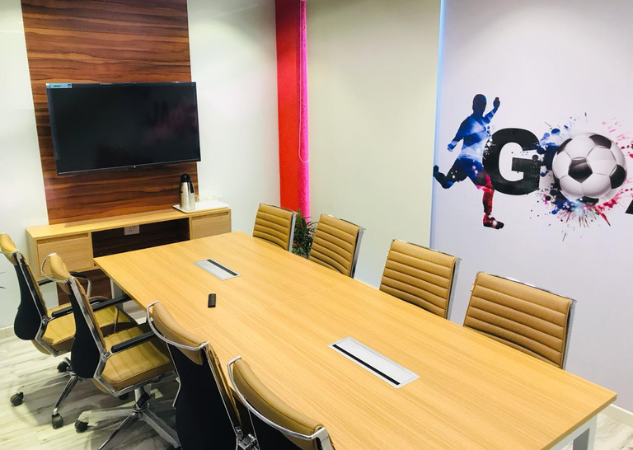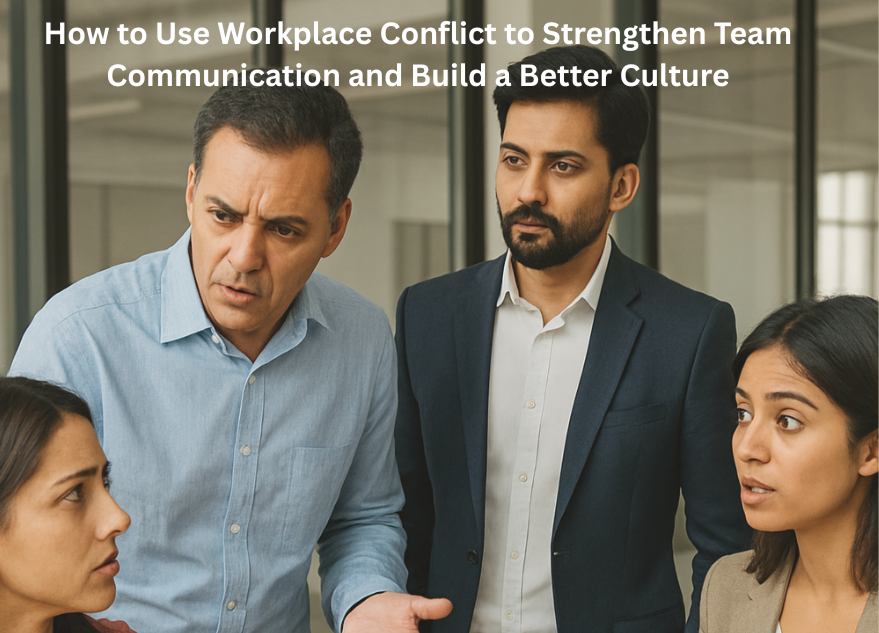Workplace conflict isn’t always negative. When managed well, it can enhance communication, strengthen team bonds, and foster a healthier culture. The key is to address the root causes and use conflict as a catalyst for growth.
💡 Are you looking for Coworking space in Gurgaon, Noida or Delhi? We are just a call away. Call Now: 08999 828282
10 Ways to Turn Workplace Conflict into Growth
- Understanding Workplace Conflict
- The Role of Organizational Culture in Conflict
- Building Psychological Safety at Work
- Strengthening Employee Relationships through Conflict
- Improving Team Communication During Disagreements
- Leadership and Conflict Management Strategies
- Using Conflict Transformation Techniques
- The Impact of Conflict on Team Dynamics
- Creating a Healthy Workplace Culture
- Fostering Long-Term Collaboration Through Conflict
1. Understanding Workplace Conflict
Workplace conflict occurs when employees have opposing ideas, goals, or working styles. These conflicts can stem from miscommunication, personality differences, or unclear expectations. However, if leaders and teams approach conflicts with a mindset of conflict transformation, it can lead to deeper understanding and better alignment.
Unresolved issues, on the other hand, weaken team communication and reduce trust. Recognizing the early signs of conflict and addressing them proactively lays the foundation for effective communication in teams.

2. The Role of Organizational Culture in Conflict
An organization’s culture defines how conflict is viewed and managed. A healthy organizational culture supports open dialogue, where disagreements are seen as chances to grow rather than threats to harmony.
If a company promotes psychological safety at work, team members are more likely to speak up, listen actively, and respect different opinions. This encourages a more inclusive environment where people feel heard, even during difficult conversations.
3. Building Psychological Safety at Work
Psychological safety at work means employees feel safe to express ideas, admit mistakes, and challenge the status quo without fear of backlash. When team members feel secure, they’re more willing to engage in honest conversations—even during conflict.
Leaders play a vital role here. They can foster this safety by actively listening, avoiding blame, and encouraging feedback. When psychological safety is prioritized, team dynamics become more collaborative and resilient.
Also Read: How To Work Well With A Colleague Who Really Dislikes You?
4. Strengthening Employee Relationships through Conflict
Conflicts, when managed well, can improve employee relationships. Difficult conversations often reveal hidden issues or unspoken needs that, once addressed, help build stronger bonds.
Conflict teaches empathy. By understanding each other’s perspectives, employees develop mutual respect. Over time, these interactions deepen trust and foster a culture where cooperation comes naturally.
5. Improving Team Communication During Disagreements
Team communication is often tested during conflict. To prevent breakdowns, it’s important to communicate clearly, listen actively, and stay focused on the issue—not the person.
Encouraging feedback and asking open-ended questions can help teams understand the real problem. Practicing effective communication in teams ensures that disagreements don’t spiral into larger issues but instead lead to better understanding.
6. Leadership and Conflict Management Strategies
Good leaders don’t avoid conflict—they manage it effectively. Leadership and conflict management go hand in hand. A leader should model calm behavior, mediate fairly, and help team members focus on solutions.
Training managers in conflict resolution at work equips them to guide teams through tough conversations, reduce tension, and promote collaboration over competition.
7. Using Conflict Transformation Techniques
Conflict transformation goes beyond resolving the problem—it aims to change the underlying relationship. It focuses on understanding emotions, building empathy, and creating long-term positive change.
By addressing both the issue and the emotions behind it, teams can shift from tension to trust. This deeper approach builds stronger collaboration and culture over time.
8. The Impact of Conflict on Team Dynamics
Conflict affects team dynamics in both negative and positive ways. If ignored, it can lead to division and resentment. If embraced and managed, it can reveal strengths, uncover hidden talents, and clarify roles.
Teams that learn how to handle conflict become more adaptable, creative, and cohesive. These experiences also improve team problem-solving and decision-making.
💡 Are you looking for Coworking space in Gurgaon, Noida or Delhi? We are just a call away. Call Now: 08999 828282
9. Creating a Healthy Workplace Culture
A healthy workplace culture is built on trust, open communication, and respect. Encouraging constructive conflict is part of this—when people feel they can disagree respectfully, they feel more valued and engaged.
Organizations can promote this culture by providing conflict resolution training, encouraging diverse opinions, and celebrating teams that work through challenges together.
10. Fostering Long-Term Collaboration Through Conflict
Collaboration and culture thrive when teams learn from conflict instead of avoiding it. Over time, shared experiences—even tough ones—can unify a group.
Organizations that treat conflict as a growth opportunity see improvements not only in communication but also in performance, innovation, and employee satisfaction.
Workplace conflict doesn’t have to weaken a team. With the right mindset and tools, it can actually strengthen team communication, enhance employee relationships, and build a more connected, healthy workplace culture. By investing in conflict resolution at work and nurturing psychological safety, organizations can turn disagreements into powerful drivers of growth and unity.
Workplace conflict, when handled constructively, can be a powerful tool for growth and stronger communication. It encourages open dialogue, fosters mutual respect, and leads to more cohesive teamwork. By addressing issues directly, teams can build a healthier, more resilient culture. The right environment plays a crucial role in this transformation. The Office Pass (TOP) offers collaborative, professional spaces that promote positive interaction and teamwork. Ready to build a better workplace culture? Contact TOP at 89998 28282 today!
FREQUENTLY ASKED QUESTIONS (FAQS):
Question: What causes workplace conflict?
Answer: Common causes include poor communication, unclear roles, personality differences, and unmet expectations. These issues can be resolved with open conversations and mutual understanding.
Question: How does conflict impact team dynamics?
Answer: When unmanaged, it can create tension and mistrust. When addressed properly, it improves understanding, strengthens bonds, and increases adaptability.
Question: What is conflict transformation?
Answer: It’s a method that focuses on changing the underlying relationship, not just solving the issue. It promotes empathy, emotional intelligence, and long-term growth.
Question: How can leaders manage conflict effectively?
Answer: By staying calm, listening actively, and focusing on solutions. Training in leadership and conflict management helps build confidence and skills in handling disputes.
Question: Why is psychological safety important during conflict?
Answer: It encourages people to speak honestly without fear. This openness is essential for resolving issues and maintaining team communication.
Question: Can conflict improve employee relationships?
Answer: Yes. Managed conflict often leads to deeper understanding and trust between team members.
Question: How do you encourage effective communication in teams?
How do you encourage effective communication in teams?
Answer: By promoting active listening, clear messaging, respectful dialogue, and regular check-ins. This builds strong team communication habits.
Question: How does organizational culture affect conflict resolution?
Answer: A culture that values transparency and feedback makes it easier to resolve conflicts constructively. It also promotes collaboration and culture development.
Question: What tools help resolve conflict at work?
What tools help resolve conflict at work?
Answer: Mediation, conflict resolution training, anonymous feedback tools, and clear communication guidelines all help.
Question: What are the long-term benefits of managing conflict well?
Answer: Improved collaboration, stronger team bonds, increased innovation, and a more healthy workplace culture overall.



